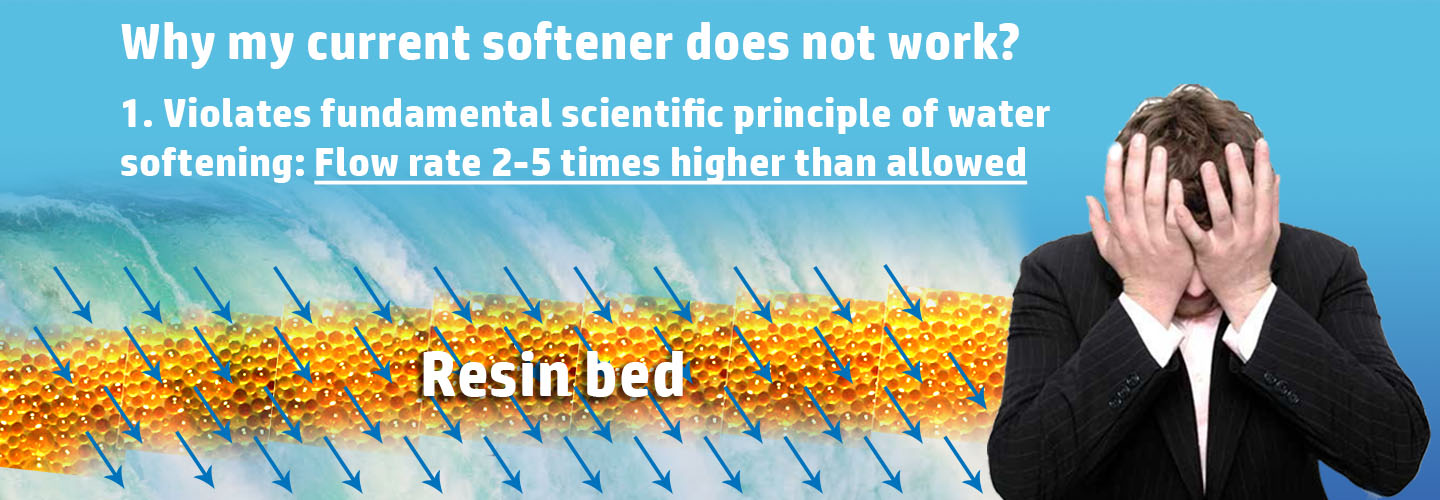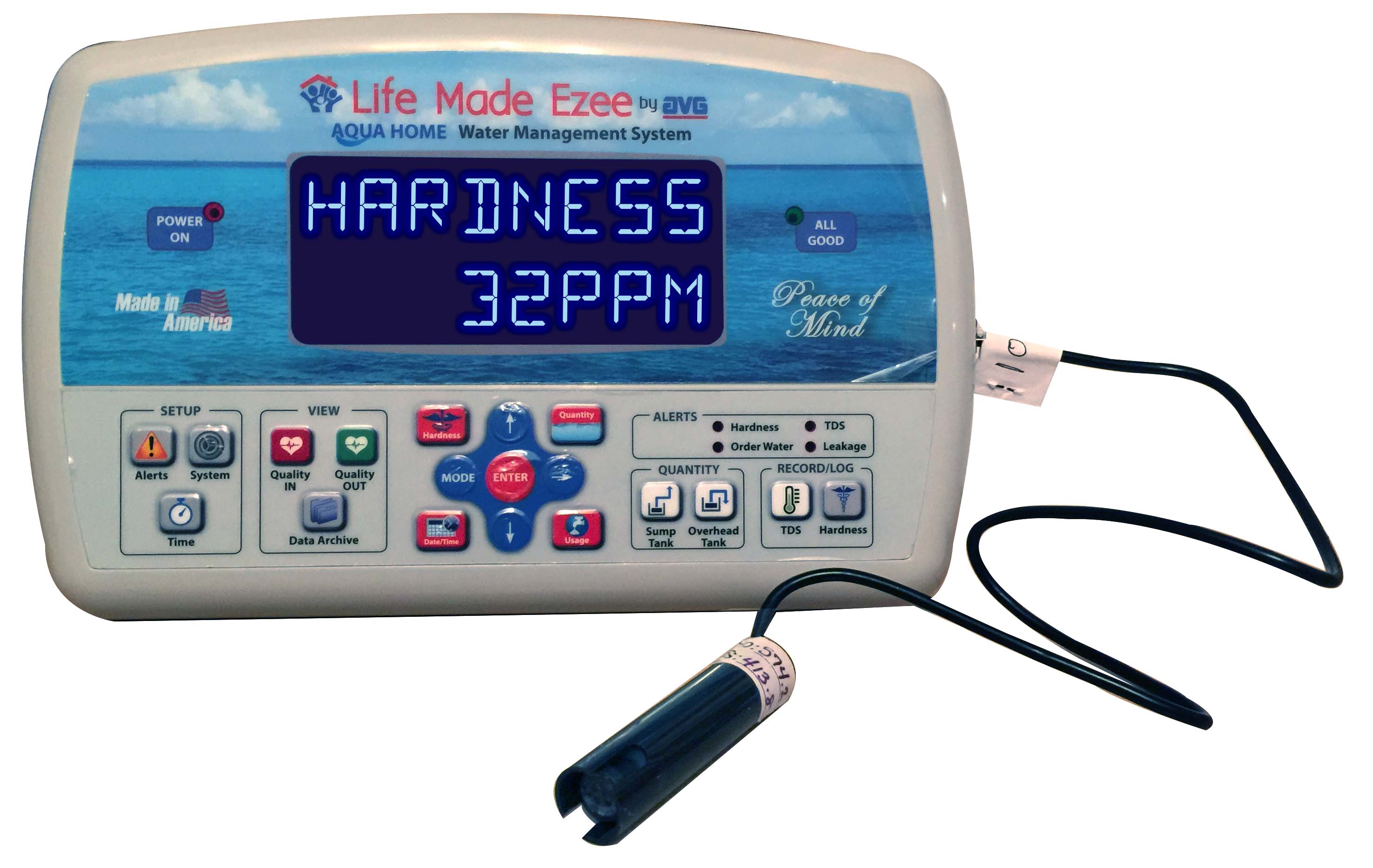Why my Current Water Softener does not work?
Current domestic water softeners in India violate the most basic principles of science and the suppliers just over look them!!

The ion exchange technology has been successfully employed in water processing plants in India. For lack of measurement and monitoring tools and automation, this technology has failed miserably on the Indian sub-continent, for the following reasons, leaving almost all of India with only HARD water for normal household needs like washing your hands, bathing, brushing your teeth, washing your clothes, washing fruits and vegetables, washing your car etc.:
- No Hardness Measurement Meter: Imagine trying to control the temperature of a room if mankind had no means to measure the temperature. Imagine the thermometer has not been invented yet, the thermo-couple or thermistor sensing element does not exist at least at commercially acceptable prices (You would not want to pay a crore of rupees to find out the temperature of your room?). How would you have an affordable air-conditioner? This is the most fundamental problem for application of any water softening technology in India. Not knowing the outcome of your process on a real time basis that is the exact hardness of the outflowing water results in poor performance or no performance of the water softener resulting from lack of timely regeneration, incomplete regeneration, hollow useless regeneration, no regeneration, no refilling of salt, no brine formation and like.
- Shortage of water and power, violation of maximum flow rate specification of resin and non-technical Untrained Installers: Lack of a Hardness measurement meter is further compounded by the need to store water in a sump tank and an overhead tank and still further aggravated by the fact that the power throughout India is intermittent and unreliable. This has forced the current suppliers of ion exchange water softening equipment to violate all basic scientific principles of cat-ion exchange. Untrained non-technical Installers not knowing the science behind cat-ion exchange, further aggravate the situation by installing the softener at the wrong place in the water supply system, for example between the sump tank and the overhead tank. Indian subcontinent is the only place in this world where such an unscientific choice is made in violation of the resin specifications itself, for example a flow rate two to five times higher than permissible by their own specifications. It is typical for the installer to have a 1Hp sump motor that pumps 2500 liters/hr thru the softener while softener resin specification is less than 1000 liters/hr due to need for enough contact time to remove the calcium and magnessium ions from the hard water.
- Open Loop Control System: Lack of feedback of the hardness parameter in current water softeners in the Indian subcontinent, results in the process being an open loop control system in the classic definition of control theory. It is like shooting in the dark or driving a car with no visibility hoping that it would somehow reach its destination. This process is fatally flawed with predictable results, that is less than 0.00001% deployment, as compared to almost 99.9% deployment in the United States.
-
 THE LME DIFFERENCE: LME WMS employs a close loop control system that monitors the hardness of water outflow and is installed after careful evaluation of the site, by professionally trained LME engineers who totally understand the science and the process. All you have to do is to enter the hardness level acceptable to you and the rest is all taken care of by the WMS. If there is any malfunction in the system, it alerts the user and a corrective action is prompted. But with LME, life is made easy with Total Peace of Mind for the home owner, just like in the US, where hardly anyone faces hard water problems even with 99.9% deployment.
THE LME DIFFERENCE: LME WMS employs a close loop control system that monitors the hardness of water outflow and is installed after careful evaluation of the site, by professionally trained LME engineers who totally understand the science and the process. All you have to do is to enter the hardness level acceptable to you and the rest is all taken care of by the WMS. If there is any malfunction in the system, it alerts the user and a corrective action is prompted. But with LME, life is made easy with Total Peace of Mind for the home owner, just like in the US, where hardly anyone faces hard water problems even with 99.9% deployment.
